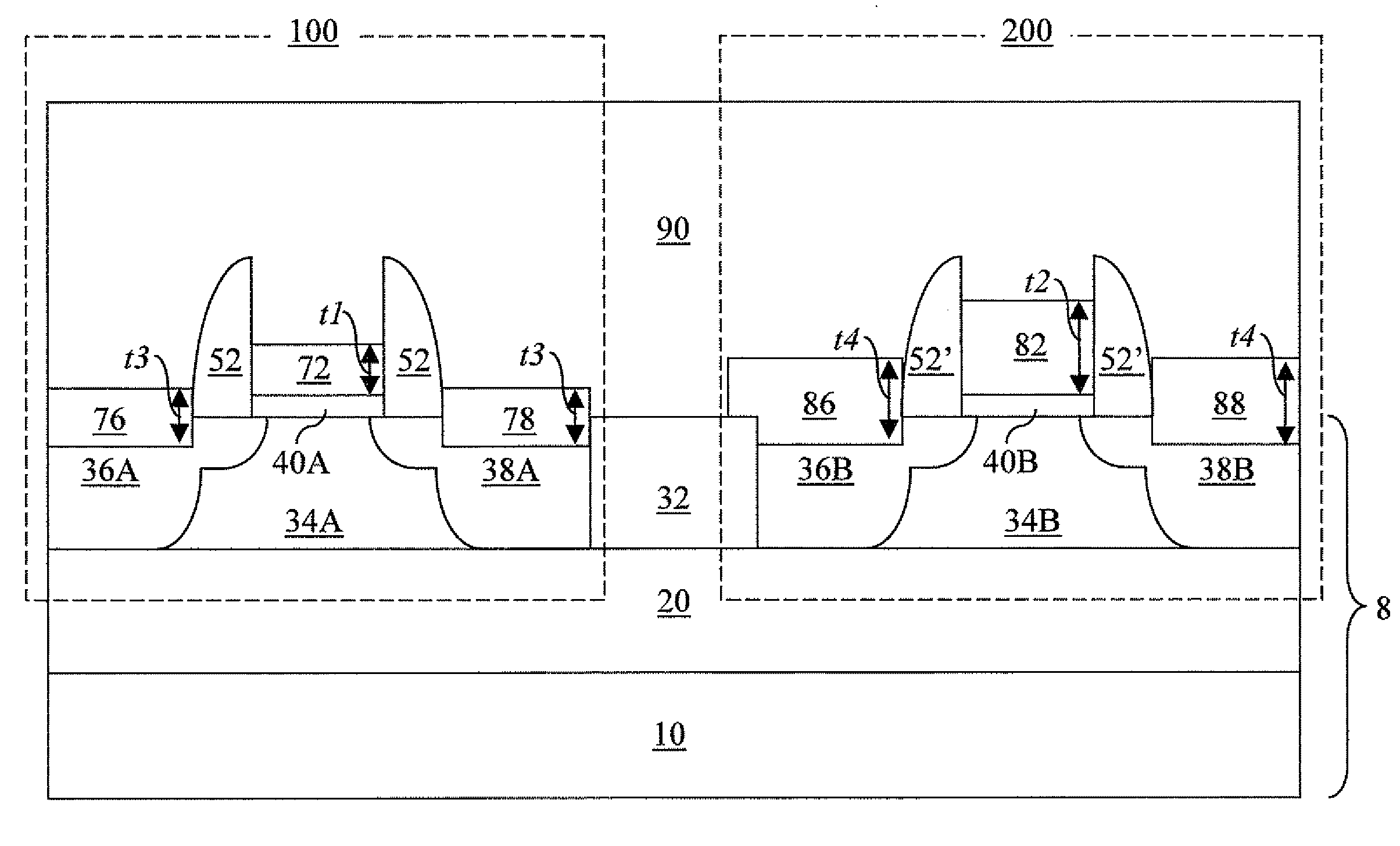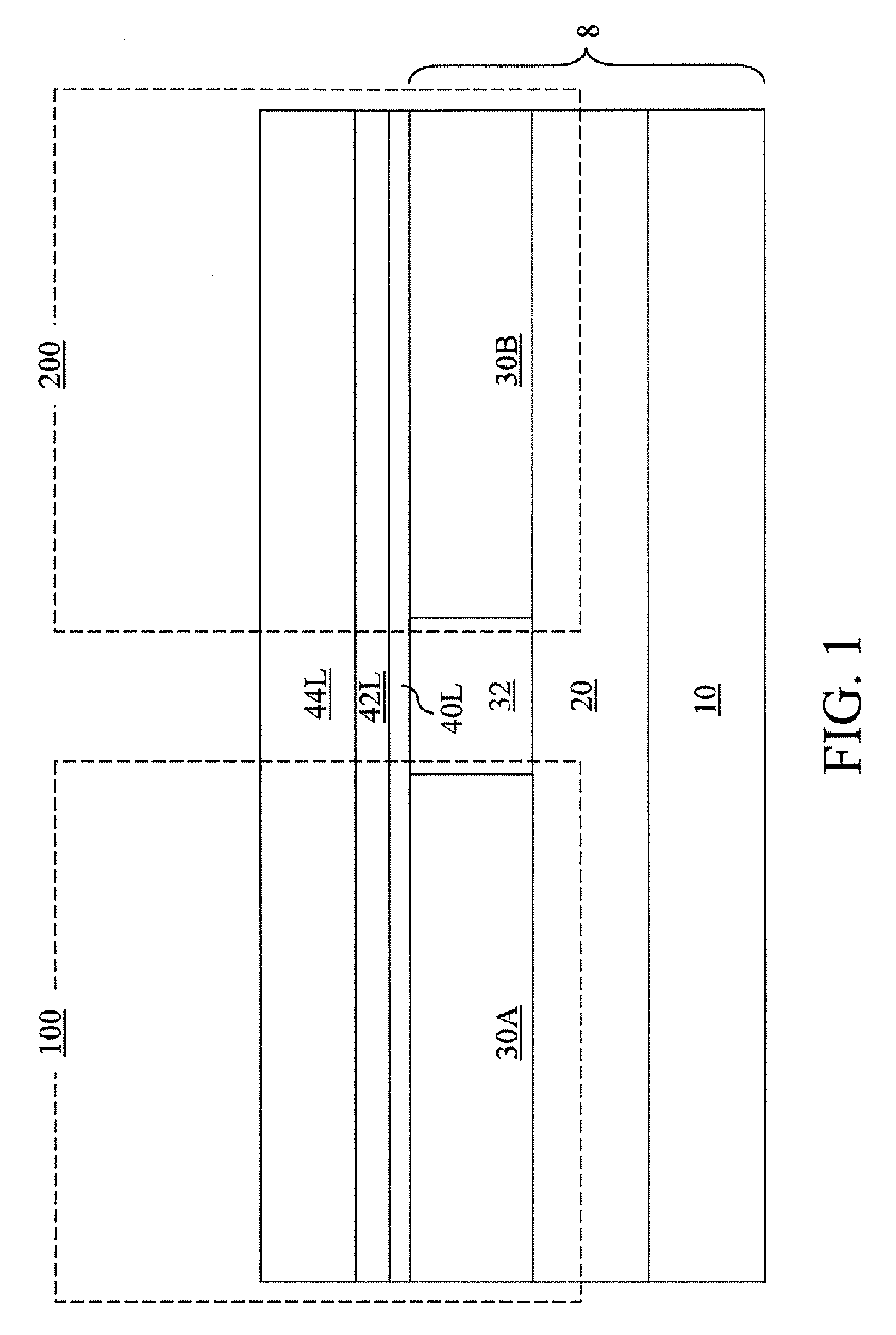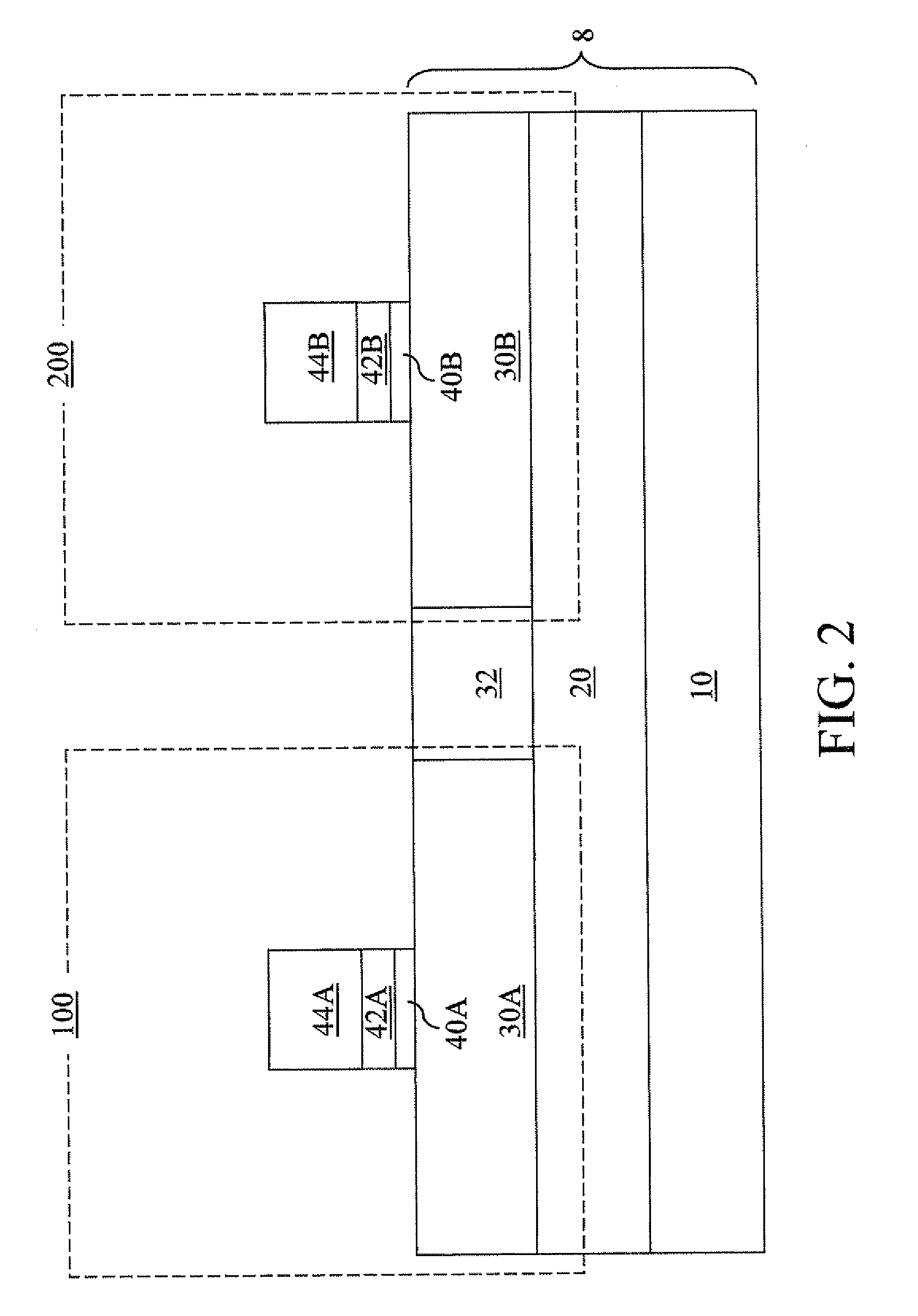CMOS integration scheme employing a silicide electrode and a silicide-germanide alloy electrode
a technology of silicide electrodes and alloy electrodes, applied in the field of silicide electrodes and silicide alloy electrodes, can solve the problems of interfacial defects between a channel and the gate dielectric, the difficulty of integrating metal gate electrodes into a semiconductor structure employing cmos transistors, and the difficulty of integrating metal gate electrodes into the semiconductor structure,
- Summary
- Abstract
- Description
- Claims
- Application Information
AI Technical Summary
Benefits of technology
Problems solved by technology
Method used
Image
Examples
Embodiment Construction
[0061]As stated above, the present invention relates to a complementary metal oxide semiconductor (CMOS) transistor having a metal silicide electrode and a metal silicide-germanide alloy electrode, and methods of manufacturing the same, which are now described in detail with accompanying figures. It is noted that like and corresponding elements are referred to by like reference numerals.
[0062]Referring to FIG. 1, an exemplary semiconductor structure according to the present invention comprises a semiconductor substrate 8 containing a handle substrate 10, a buried insulator layer 20, and a top semiconductor layer including a first semiconductor portion 30A, a second semiconductor portion 30B, and a shallow trench isolation structure 32. The first semiconductor portion 30A and the second semiconductor portion 30B comprise a semiconductor material, which may be selected from, but is not limited to, silicon, germanium, silicon-germanium alloy, silicon carbon alloy, silicon-germanium-car...
PUM
 Login to View More
Login to View More Abstract
Description
Claims
Application Information
 Login to View More
Login to View More - R&D
- Intellectual Property
- Life Sciences
- Materials
- Tech Scout
- Unparalleled Data Quality
- Higher Quality Content
- 60% Fewer Hallucinations
Browse by: Latest US Patents, China's latest patents, Technical Efficacy Thesaurus, Application Domain, Technology Topic, Popular Technical Reports.
© 2025 PatSnap. All rights reserved.Legal|Privacy policy|Modern Slavery Act Transparency Statement|Sitemap|About US| Contact US: help@patsnap.com



